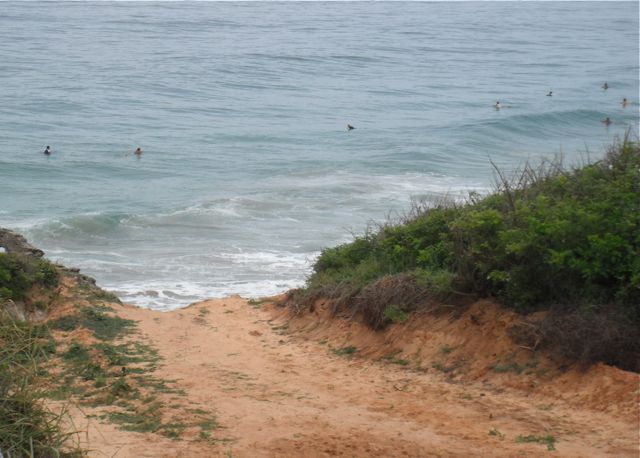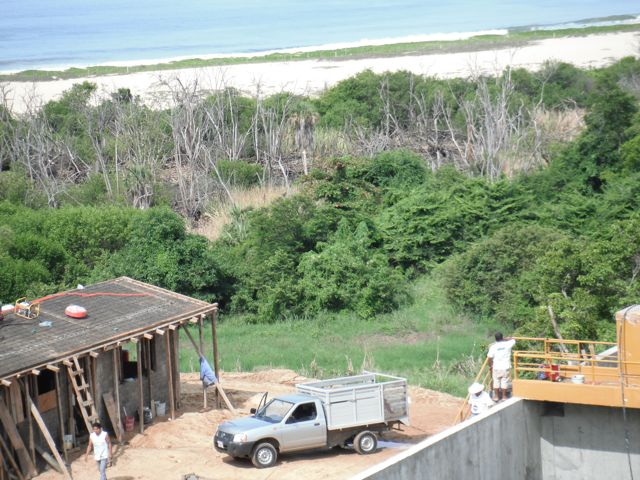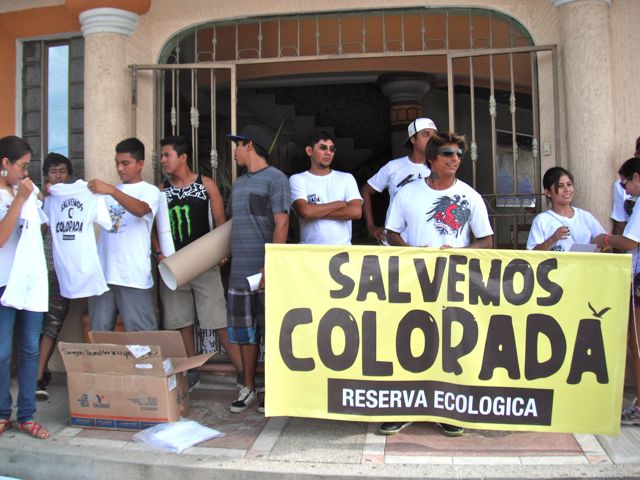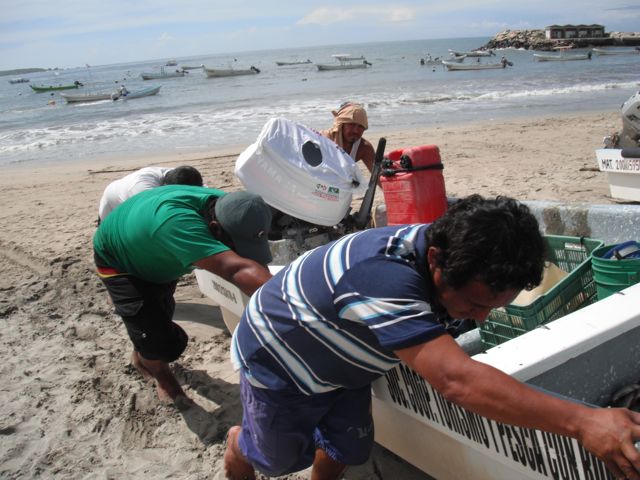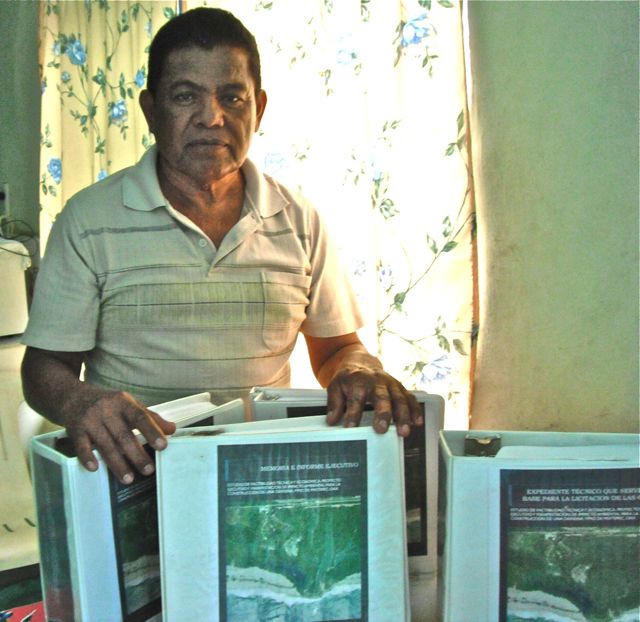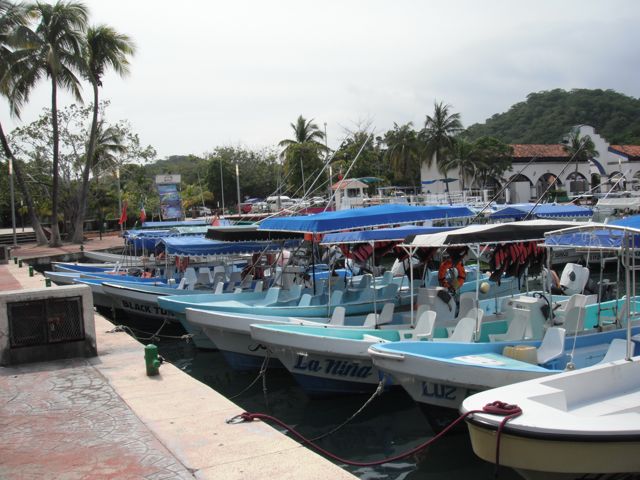A Port In Punta Colorada?
Punta Colorada is the heavily forested part of Puerto Escondido opposite the airport. The area, which was part of the 1970 Federal expropriation of Puerto, is fenced in and belongs to the State of Oaxaca. It is generally assumed that it will be developed for hotels and condominiums.
The dirt road across from the airport entrance, leads to both the city’s main sewage treatment plant and to the beach at the end of the point. The sewage plant is on the west side of the cape, below it is a polluted lagoon that is still the home of crocodiles, and below that is the beach. Because of its unique wave, this is a favored spot for some of Puerto’s body boarders.
Alarmed by plans to build a port (dársena) in the lagoon, body boarders and their supporters staged a march down Avenida Oaxaca on July 26 to protest the destruction of the wave. There is also an international campaign: “No a la dársena en Punta Colorada” in Facebook and surfing magazines. One theme of the No campaign is that the port would be a “white elephant” of no use to anyone.
However, the tour boat operators and fishermen we have spoken to all support a dársena in Punta Colorada. They say the Bahia Principal is not a safe place for them to moor their boats because the current, which sometimes takes away the beach, sweeps boats away. They also note that the bay would be cleaner without the boats and better for bathing.
Rodolfo Silva Ramírez of the Cooperativa Túristica Nueva, Puerto Escondido, which includes 12 launches (there are 85 registered tourist boats serving the Playa Principal), says the dársena would be a boon to the tour operators as it would allow them to have boats for 30 or more passengers, such as they have in Huatulco. He says that many tourists are afraid to go out in small boats and, in the absence of piers, passengers are forced to wade out into the water to board. Ideally, he said, the boats would be docked in Punta Colorada and pick up passengers at a pier in Puerto Piedra, near the lighthouse.
Luis Luna, the president of the Empresa Integradora of nine fishing co-ops, thinks that the dársena would also be a boon for Puerto’s 600 fishermen. He said that the people opposing the project did not realize how important fishing was to the local economy and how many families were dependent on it. He noted that the dársena would allow easy access for towing and fuelling, as well as greater protection from the currents. Body boarders, he said, can practice their sport on Zicatela and other beaches in Puerto, options not open to fishermen.
The dársena would hold docks for fishing boats, tour boats and yachts and would most likely be a joint Federal, State and Municipal project, although it could also be a private concession. As of September, there has been no official document presented to the Capitanía de Puerto Escondido concerning a dársena, according to Naval Pilot Rafael Alfredo Gutiérrez Robles, the Captain of the Port.

